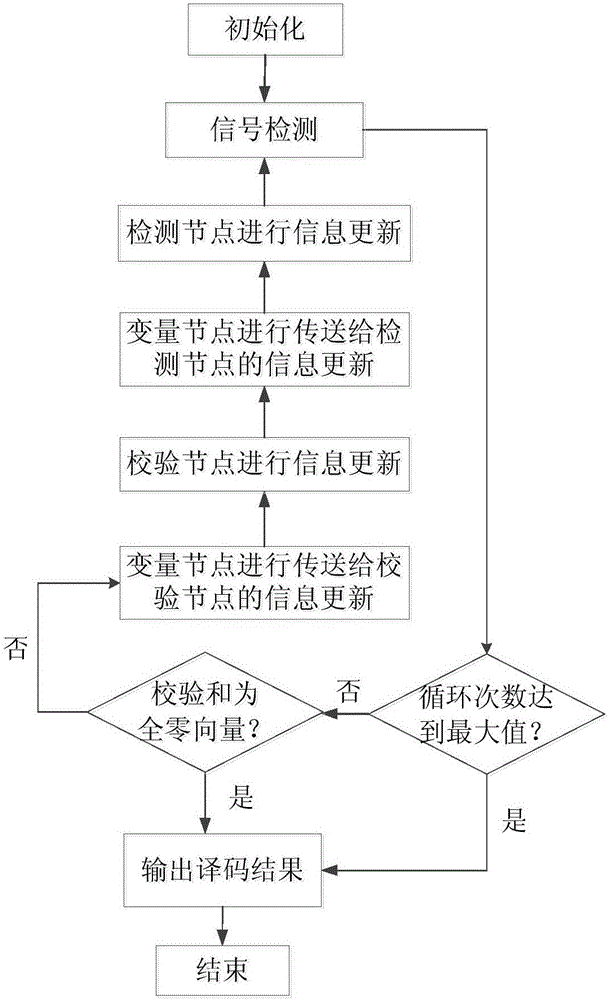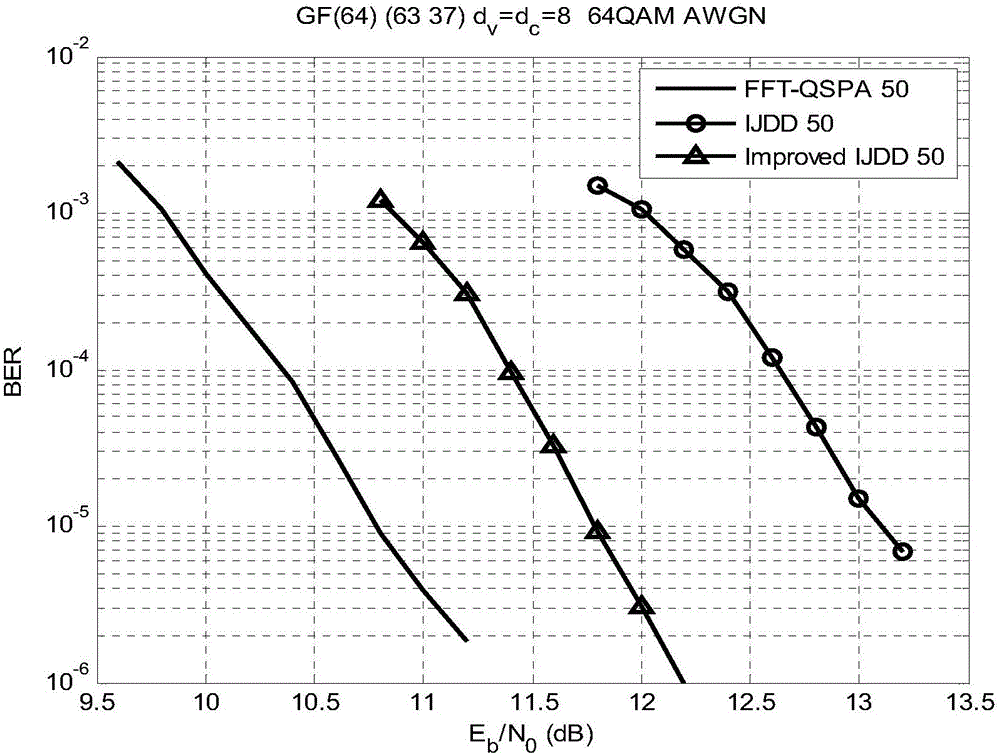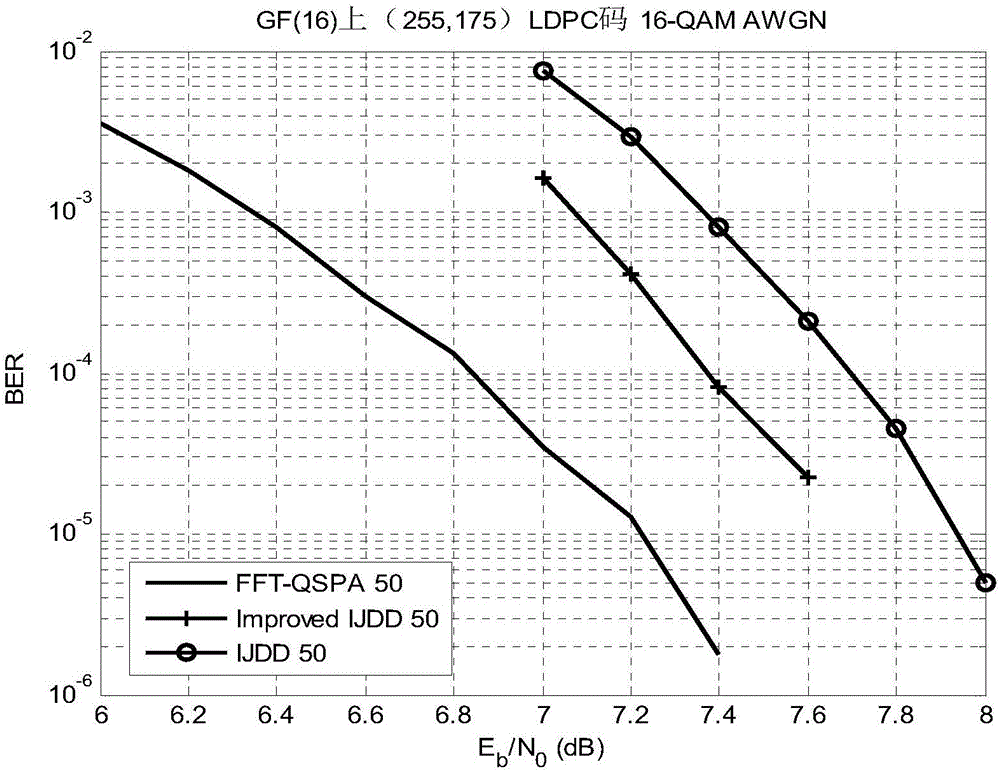Low-complexity multivariate LDPC code decoding method and decoder
An LDPC code, low-complexity technology, applied in the field of low-complexity multi-element LDPC code decoding methods and decoders, can solve problems such as high complexity, loss of performance, and difficulty in implementation
- Summary
- Abstract
- Description
- Claims
- Application Information
AI Technical Summary
Problems solved by technology
Method used
Image
Examples
Embodiment Construction
[0049] Such as figure 1 Shown, the multivariate LDPC code decoding method of low complexity of the present invention comprises the following steps:
[0050] Step 1. Initialize the number of cycles to 0;
[0051] Step 2. Signal detection: The signal detection module makes a hard decision on the received sequence y according to the maximum likelihood judgment criterion, and obtains the most likely estimated sequence of the transmitted sequence x corresponding to the received sequence y and the second possible estimate sequence And calculate the reliability measure Δd of the received sequence y; then, for the most likely estimated sequence Perform demapping to obtain the most likely estimated symbol sequence z 1 , for the second possible estimate sequence Perform demapping to obtain the second possible estimated symbol sequence z 2 ;Finally, the reliable measure △d of the received sequence y, the most likely estimated symbol sequence z 1 and the second possible estimate...
PUM
 Login to View More
Login to View More Abstract
Description
Claims
Application Information
 Login to View More
Login to View More - R&D
- Intellectual Property
- Life Sciences
- Materials
- Tech Scout
- Unparalleled Data Quality
- Higher Quality Content
- 60% Fewer Hallucinations
Browse by: Latest US Patents, China's latest patents, Technical Efficacy Thesaurus, Application Domain, Technology Topic, Popular Technical Reports.
© 2025 PatSnap. All rights reserved.Legal|Privacy policy|Modern Slavery Act Transparency Statement|Sitemap|About US| Contact US: help@patsnap.com



